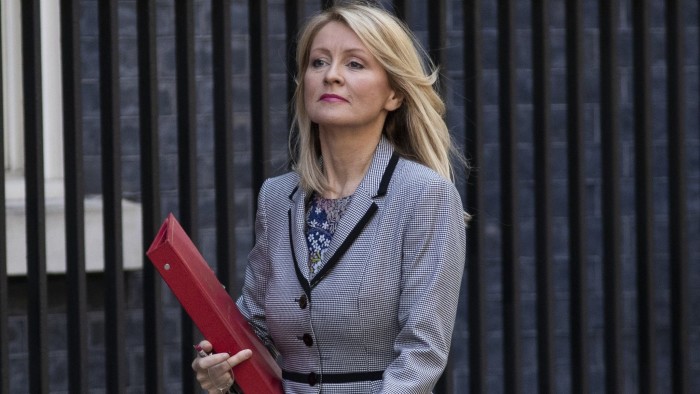Why is the pensions dashboard still stuck on the blocks?

Simply sign up to the Workplace pensions myFT Digest -- delivered directly to your inbox.
There is little “dash” to produce the “pensions dashboard” — a digital innovation that promised to let people see all their pensions savings in one online place.
The days of a job for life are long gone, so most of us will be relying on a combination of various workplace pensions, private pensions and the state pension to provide an income when we retire.
Helping consumers track the progress of their investments on a centralised “dashboard” was one of former chancellor George Osborne’s bright ideas, before he moved into the newspaper business.
First set out in the 2016 Budget, the Red Book promised: “The government will ensure the industry designs, funds and launches a pensions dashboard by 2019 [where] an individual can view all their retirement savings in one . . . digital interface.” (paragraphs 1.114 and 2.61 respectively).
A feasibility study, due to be published nearly six months ago in March, has yet to materialise. A few days ago, the Department for Work and Pensions told me that the study “will be published in due course, but there is no update at the moment”.
Meanwhile, those in the industry fear the deadline of 2019 is looking impossibly ambitious.
The Association of British Insurers, the lobby group for the pensions industry, sent a working prototype and a blueprint for action to the DWP last October. In return, the DWP promised a feasibility study in March.
But last month, The Times claimed that Esther McVey, secretary of state for work and pensions, was planning to end the government’s involvement in the project altogether, as she believed it was not something the state should be involved in. Instead, it was implied, the onus should be on the private sector to track down the estimated £400m worth of lost or forgotten pensions languishing in pension industry vaults.
The DWP would not comment further on the speculation. Since then, more than 140,000 people have signed an online petition entitled “Don’t scrap the pensions dashboard”.
The industry is willing to go it alone, but it needs the government to state its position publicly first. It sees the pensions dashboard as a massive sales opportunity. By putting all an individual’s pension data — including lost pensions — in one place, people could simply tap on an app and see how inadequate their pension savings are. A bolt on would tell them how much more they should be saving to have a retirement where they could both eat and heat their home. Kerching — more sales for the pensions industry.
A survey by the credit reference agency Experian found that about half of us would not use the dashboard if it did not include all of our pensions. That is a massive task.
The pensions consolidator PensionBee estimates that 30 per cent of the pensions it transfers had been kept on paper records (remember those dusty manilla files with green treasury tags?). Even those stored digitally are on a variety of legacy systems dating back 30 years or more.
Experian, which was involved in the ABI prototype dashboard, has also found that out of every million pension records there were only 362,000 actual customers. The rest were duplicate records that had not been consolidated. More than one in eight had an address that was incorrect or wrongly formatted. Some had no date of birth or belonged to people who were dead.
There are 29m people in 40,000 occupational pension schemes, plus millions more with individual private pensions. All that data has to be cleansed, corrected, and allocated to the right John Smith as far back as the great boom years of pensions mis-selling in the 1980s and 1990s — which it now seems was also a time of name and address mis-spelling.
The dashboard is expected to include the UK’s 5,588 private sector defined benefit schemes but the Treasury has refused to confirm whether the non-contributory public sector pensions due to millions of people will ever be part of the project. And there is still no certainty that the state pension will be included, even though state pension forecasts are already available online for individuals.
Despite these problems, Anthony Rafferty, chief executive of fintech firm Origo, is confident it can be done — and by the original 2019 deadline.
“I’ve been frustrated with comments about how difficult this is and it’s not going to happen,” he tells me. “Our latest prototype is a working version using anonymised live data. It goes into firms and pulls the data on to our display and is tested for up to 15m users.”
But even he agrees that someone has to say “go” very soon. Only Esther McVey can put the “dash” into the dashboard.
Paul Lewis presents ‘Money Box’ on BBC Radio 4, on air just after 12 noon on Saturdays, and has been a freelance financial journalist since 1987. Twitter: @paullewismoney
Comments